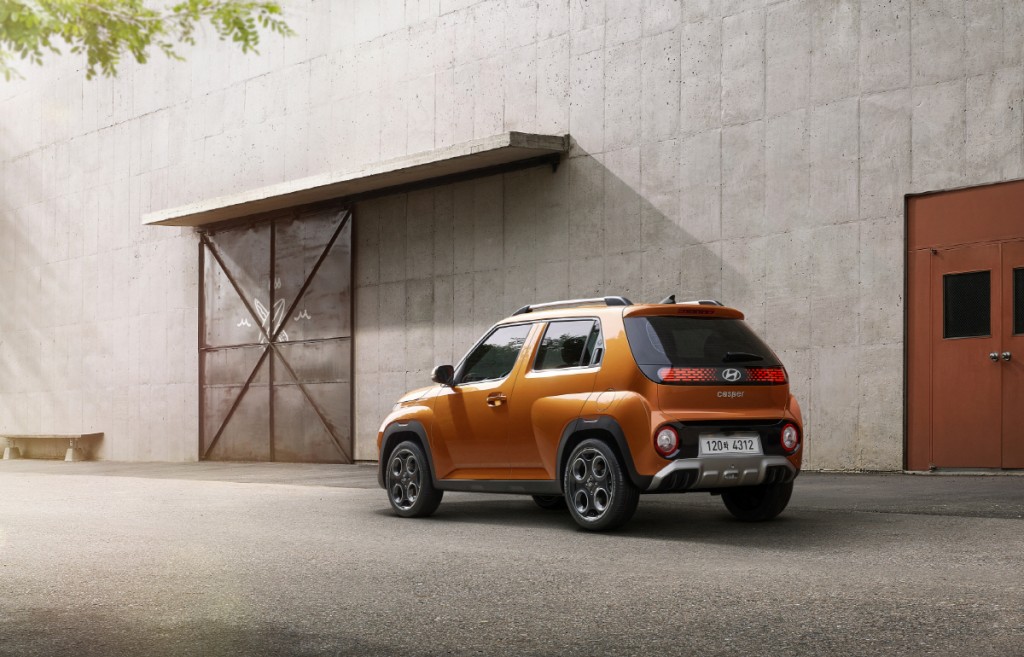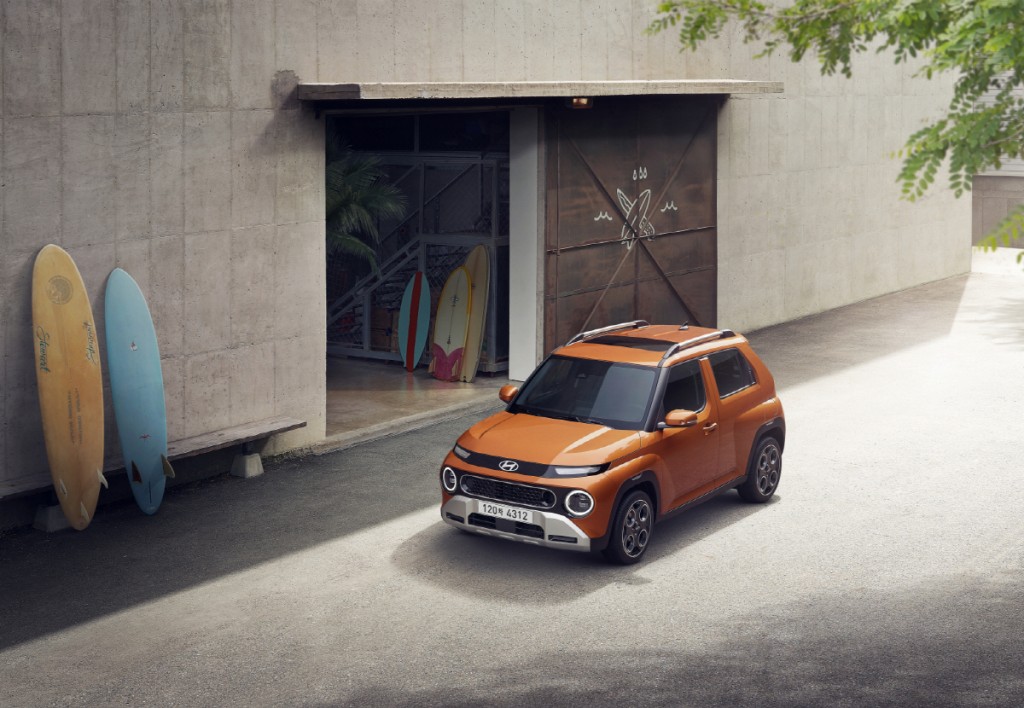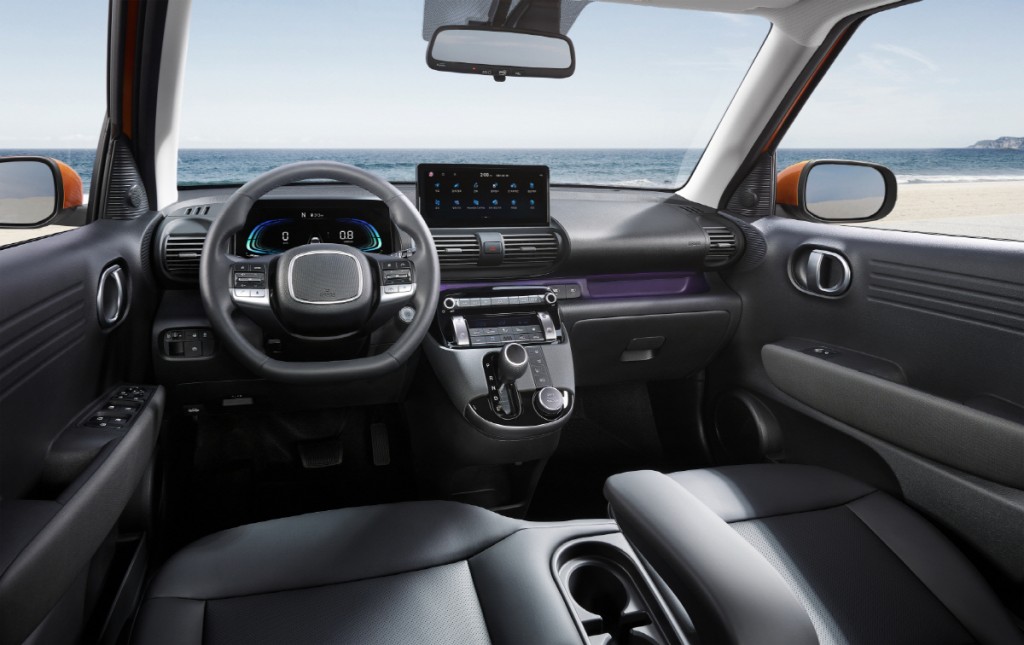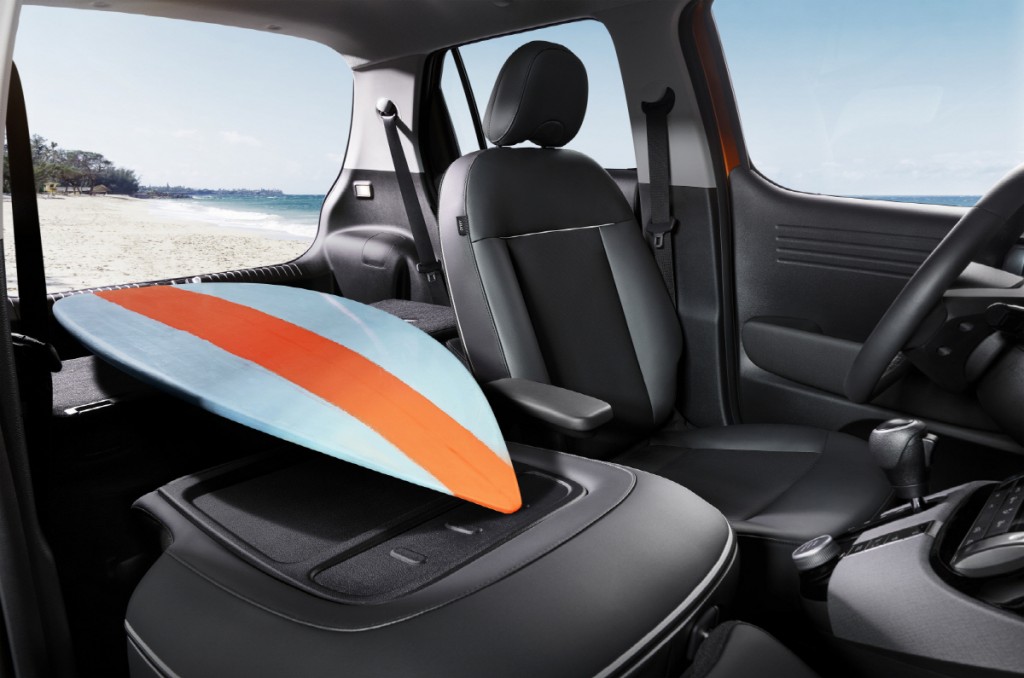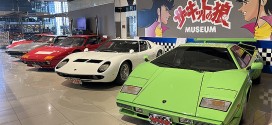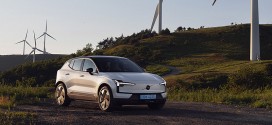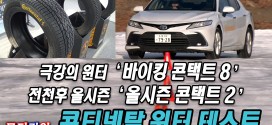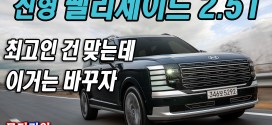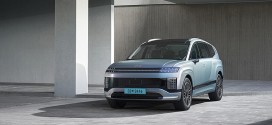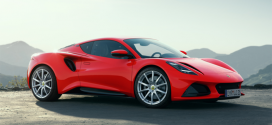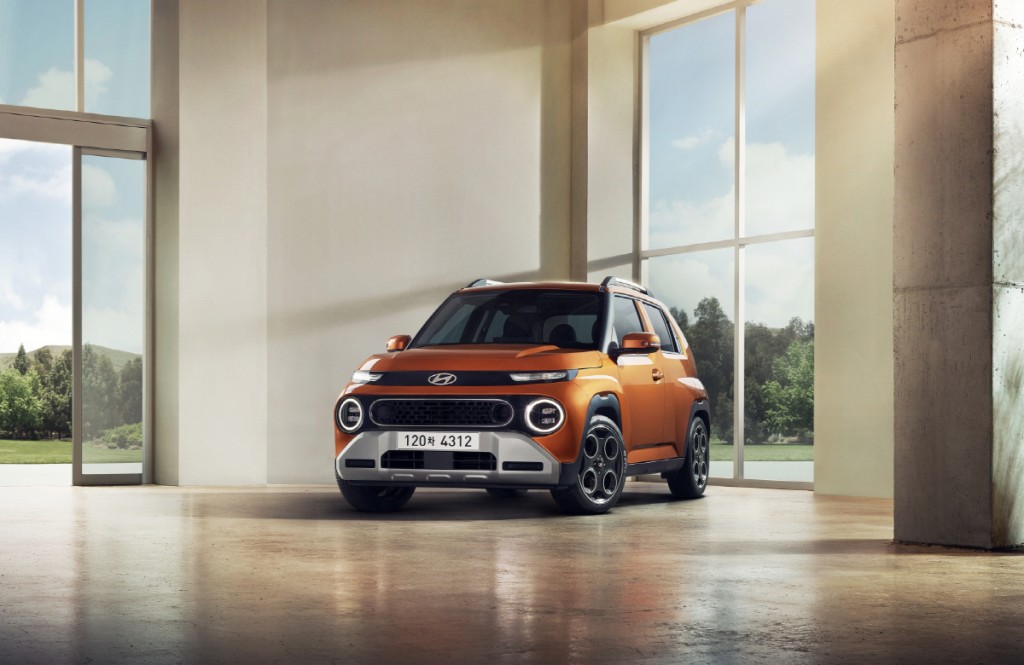 현대자동차가 상품성을 대폭 강화한 엔트리 SUV ‘더 뉴 캐스퍼(The new CASPER)’를 출시한다고 밝혔다. 이 모델은 2021년 출시 이후 3년 만에 새롭게 선보이는 상품성 개선 모델로, 캐스퍼의 아이코닉한 디자인을 계승하면서도 고객 선호 안전 및 편의 기능을 대폭 강화한 것이 특징이다.
현대자동차가 상품성을 대폭 강화한 엔트리 SUV ‘더 뉴 캐스퍼(The new CASPER)’를 출시한다고 밝혔다. 이 모델은 2021년 출시 이후 3년 만에 새롭게 선보이는 상품성 개선 모델로, 캐스퍼의 아이코닉한 디자인을 계승하면서도 고객 선호 안전 및 편의 기능을 대폭 강화한 것이 특징이다.
더 뉴 캐스퍼는 기존 모델의 아이코닉한 디자인을 기반으로 SUV 특유의 단단함을 강조한 외장 디자인과 고급스러운 실내 디자인을 결합하여 더욱 세련된 이미지를 자랑한다. 전면부에는 LED 프로젝션 헤드램프가 장착된 블랙 하이그로시 라디에이터 그릴이 적용되어 강렬한 인상을 주며, 입체감 있는 프론트 범퍼와 스키드 플레이트가 자연스럽게 어우러진다.
측면부에서는 신규 17인치 알로이 휠이 돋보이며, 후면부의 새롭게 디자인된 리어 램프가 세련미를 더한다. 전면부와 통일감 있게 디자인된 리어 범퍼와 스키드 플레이트는 캐스퍼 특유의 아이코닉한 이미지를 완성시킨다. 특히, 공기 저항을 최소화한 라디에이터 그릴 부위의 공력 설계를 통해 기존 모델보다 약 6% 개선된 0.34의 공력계수를 달성했다.
현대차는 고객의 요구를 반영해 더 뉴 캐스퍼에 다양한 안전 및 편의 사양을 추가했다. 기본으로 제공되는 지능형 속도 제한 보조(ISLA)와 크루즈 컨트롤을 비롯해, 고급 사양으로는 고속도로 주행 보조(HDA)와 전방 충돌방지 보조(FCA) 기능이 추가되어 동급 모델에서는 찾아보기 힘든 첨단 운전 보조 시스템을 갖췄다.
또한, 도어 개폐 편의성을 높이기 위해 동승석 도어에 버튼 타입 아웃사이드 도어핸들 스위치를 추가했으며, 정차 시 제동 상태를 유지해주는 오토홀드 기능이 포함된 전동식 파킹 브레이크로 주행 및 주차 편의성을 강화했다.
인포테인먼트 시스템 역시 개선되어 10.25인치 내비게이션과 함께 내비게이션 무선 업데이트(OTA), 현대 카페이, 자연어 음성인식 등이 적용됐다. 고객 선호도에 맞춘 다양한 옵션 사양이 기본으로 제공되어 상품성을 높였다.
현대차는 더 뉴 캐스퍼 출시를 기념해 다양한 마케팅 활동도 전개할 계획이다. 10월 출고 고객에게는 IPX(구 라인프렌즈) 캐릭터 ‘조구만’ 콜라보 열쇠고리를 증정하고, 150명을 추첨해 텀블러와 전화번호판이 포함된 기프트 박스를 제공할 예정이다.
판매 가격은 기본 모델인 스마트 1460만원, 디 에센셜 1680만원, 인스퍼레이션 1980만원이며, 밴 모델은 스마트 1450만원, 스마트 초이스 1550만원으로 책정됐다.
한편, 이날 현대차는 캐스퍼 일렉트릭의 기본형 모델인 ‘프리미엄 트림’도 함께 출시했다. 이 모델은 42kWh NCM 배터리를 탑재해 1회 충전 시 278km의 주행 가능 거리를 자랑하며, 판매 가격은 2740만원으로 설정됐다. 정부 및 지자체 보조금을 더하면 지역에 따라 1000만원대에 구매할 수 있을 것으로 기대된다.
McLaren just introduced the new W1. Porsche will pull back the cover on its latest hypercar in a few months. Now, more than a decade after the introduction of the LaFerrari, Ferrari has a new flagship dubbed the F80. And just like the LaFerrari, this one hopes to rewrite hypercar history.
The big news is what’s under the hood: A hybrid V-6. Ferrari chopped its iconic V-12 in half and slapped three electric motors into the powertrain. The 3.0-liter engine alone makes 900 horsepower, and when combined with the electric motors, the F80 has a total output of 1,184 hp. It’s the most powerful Ferrari ever built.
It takes just 2.15 seconds for the Ferrari F80 to reach 62 miles per hour, and 5.75 seconds to reach 125. The F80′s top speed is listed at 217.5 mph—quicker and (slightly) faster than the McLaren W1.
The 3.0-liter V-6 is loosely the same 120-degree, hot-v engine from the 296 sports car and 499P Le Mans race car. And even though it has roughly 237 more hp than the 296, it doesn’t gain any weight.
Ferrari engineers modified the ignition and injection timing, and increased the combustion chamber pressure by 20 percent compared to the 296. The eight-speed dual-clutch transmission was specially calibrated to account for that added pressure, and the electric turbos—with a motor on the shaft between the turbine and compressor—virtually eliminate lag. With those upgrades, the V-6 achieves a maximum engine speed of 9,000 rpm, with a dynamic limiter at 9,200 rpm.
Ferrari developed and built its electric motors in-house. The front axle houses two plus an inverter and an integrated cooling system, while the third motor is located on the rear. The two motors up front allow for torque vectoring and can send up to 210 kilowatts back to the front axle through regenerative braking.
Now, more than a decade after the introduction of the LaFerrari, Ferrari has a new flagship dubbed the F80. And just like the LaFerrari, this one hopes to rewrite hypercar history.
The electric motor on the rear performs three basic functions: Starting the gas engine, recovering energy, and adding additional torque when necessary. It’ll add an extra 80 hp to the total output and can recoup 70 kW of energy in regeneration mode. All three of those electric motors are connected to an 800-volt lithium-cell battery pack with a total capacity of 2.3 kilowatt-hours, dishing out a total output of 325 hp.
The F80 uses an asymmetrical monocoque chassis constructed of carbon fiber and composite materials. The roof is made entirely of carbon fiber, and both the front and rear subframes are aluminum. The asymmetrical design of the chassis means that the driver’s seat is adjustable (as opposed to the fixed positioning on the W1 and other monocoque supercars, the LaFerrari included), while the F80′s butterfly doors allow for easier ingress and egress—plus they just look cool.
The F80 has a traditional two-seat layout with a driver-focused cockpit—Ferrari calls it a “1+” configuration. The control panel is angled toward the driver, and the driver’s seat is a bright red adjustable sport bucket, as opposed to the passenger’s seat, which is fixed to the chassis. Ferrari also created a new steering wheel for the F80 with a flatter top and bottom that will make its way to other Ferrari models in the future.
Flavio Manzoni penned the F80′s design at the Ferrari Styling Center in Maranello with retro cues like the Daytona-inspired headlight “visor” and the F40-inspired rear wheel arches. The greenhouse sits nearly 2.0 inches lower than that of the LaFerrari, and active aero gives the F80 two unique visual flavors at the rear.
Ferrari took most of its aerodynamic cues from Formula 1—as you’d expect. The pointed nose combined with Ferrari’s signature S-Duct gives the F80 a whopping 1,014 pounds of downforce at 155 miles per hour on the front end alone. With an active wing and a massive 71.0-inch diffuser, the F80 produces 1,300 pounds of downforce at the rear, for a total of 2,204 pounds of downforce at 155 mph—nearly identical to the McLaren W1′s 2,205 pounds, though that’s achieved at 174 mph.
The Ferrari F80 has three different drive modes: Hybrid, Performance, and Qualify. The F80 does not have a fully electric drive mode like the W1 (or other Ferrari hybrids), but the default Hybrid mode prioritizes energy recovery and battery charge, while Performance mode doles out more power while keeping the battery at a charge state of around 70 percent. Qualify mode, as you’d expect, unleashes the F80′s full power.
Ferrari also introduced a new technology called Boost Optimization that drivers can access in Performance and Qualify mode. After a quick reconnaissance lap at your preferred track, Boost Optimization will recognize specific areas of the course where it can deliver additional boost—on a long straight, for example—and dole out power as it sees fit.
To bring the F80 back down to speed on those long straights, Ferrari worked directly with Brembo to introduce new CCM-R Plus braking technology. The advanced carbon brakes use longer fibers that improve mechanical strength over traditional carbon fiber brakes by 100 percent, while improving thermal connectivity by 300 percent.
Like the Purosangue, the F80 also gets an active-suspension system, based on spool-valve dampers from Multimatic. Each damper has a motor that can brake or accelerate the piston, eliminating the need for anti-roll bars and allowing for a huge spread between ride quality and handling performance. The suspension system also ensures a very stable aerodynamic platform, essential for a high-downforce car like this.
Buyers can choose from two excellent tire options: Michelin Pilot Sport Cup 2s or Pilot Sport Cup 2Rs, measuring 285/30 front and 345/30 in the rear. And Ferrari even offers some active safety equipment; Automatic emergency braking, a lane departure warning, lane-keep assist, automatic high-beam assist, and traffic sign recognition.
The Ferrari F80 costs €3.6 million—or about $4 million USD at current conversion rates. That makes it, easily, the most expensive new Ferrari of all time, and double the price of the W1. Only 799 will be built. Production kicks off at the end of 2025 and will last until 2027.
![[모터리언] Motorian](http://www.motorian.kr/wp-content/uploads/2013/05/aMotorianNWT-1-280-80.jpg) [모터리언] Motorian 자동차의 모든것
[모터리언] Motorian 자동차의 모든것
